Building Free Tools for Marketing (SEO)
A few months ago I built my first free tool that renders website screenshots for free and without signing up (for my screenshot API). And now I have enough data to analyze if the effort was worth it.
(By the way, have I made you laugh? Did you notice what I just did? Yes, I am promoting my tools in my newsletter—they also need backlinks.)
Everybody will tell you to build free tools, but after the analysis it is not clear for me, if you should do that:
- Time spent (building): ~1 day.
- Traffic: ~500 visitors for the last 90 days.
- Paying customers: 0.
- Money made: $0.
Is it a skill issue? Don’t be so fast to judge.
I will share with you everything I did with all real data, and you will decide for yourself.
1. Have a hypothesis
I am a founder of ScreenshotOne—a screenshot API for developers. But not only developers. Recently, more and more new users came through the integration with automation platforms like Zapier and similar.
Many customers came just to automate website screenshots which led me to my simple hypothesis:
If somebody searches for the “website screenshot” keyword, they might as well want to make more than one screenshot and if so they will need to do so, they might prefer to automate that process. And that is how they will become my paying customers.
If it worked, I would get more paying customers! As it turned out, reality was more nuanced than what I initially thought.
2. Check search volume
I went to Google Ads and checked the potential traffic with the Keyword Planner tool (it is free, by the way):

Average monthly searches was in the range between 10,000 and 100,000. It is perfect! Enough searches to try to compete for them and to experiment with conversions.
Google Ads showed low competition, but it means that there is almost nobody buying ads for that keyword. And it was cheap by the way to try. Maybe I should?
3. Check keyword difficulty
I was doing that for SEO, not for Google Ads. So I went to Ahrefs and checked the keyword difficulty with their free tool:
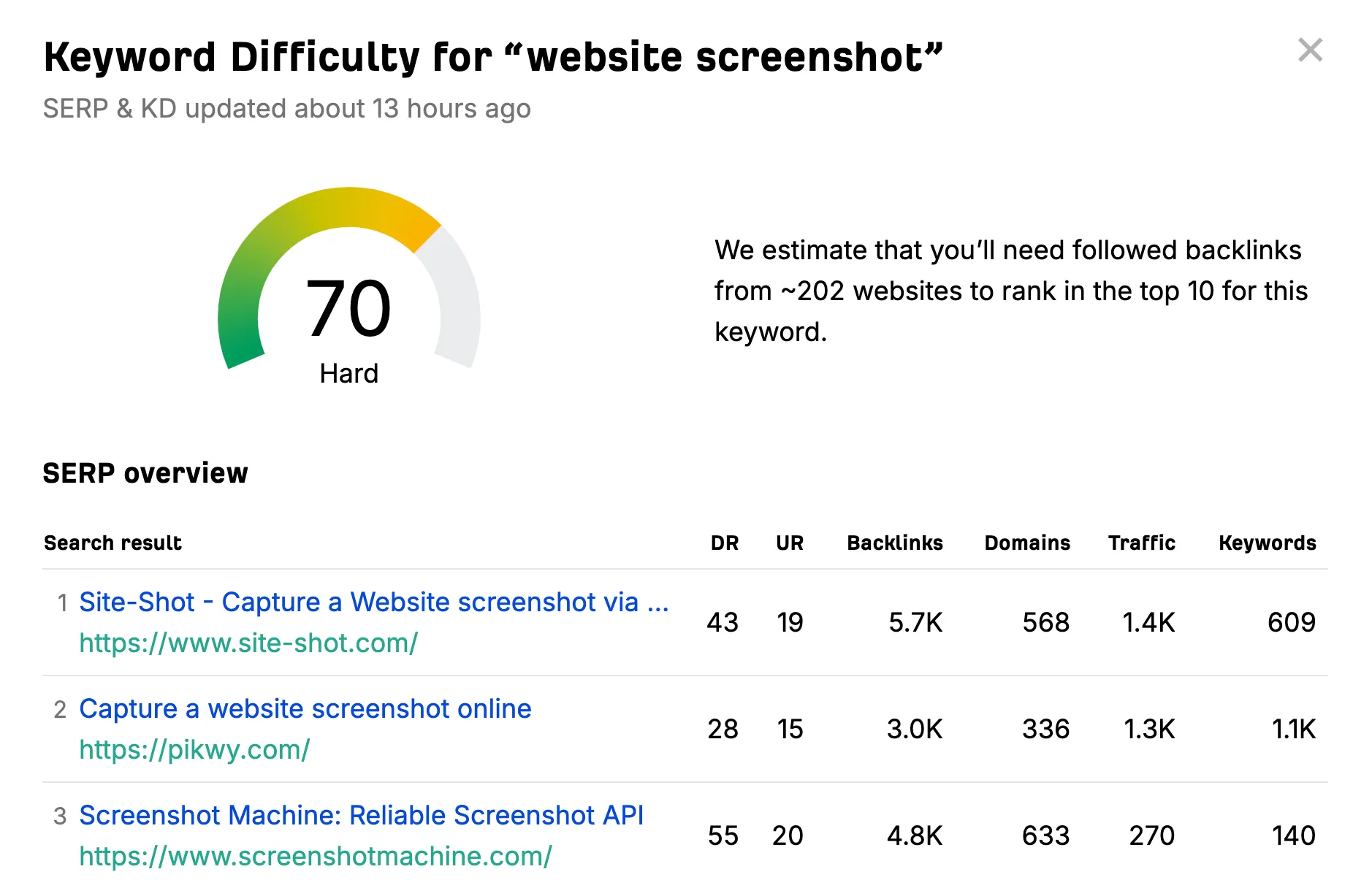
It would be a tough keyword, but my website already had a decent domain rating, decent backlinks and high rankings in the related niche. I decided I can try to compete. And I started building the tool.
4. Build
4.1. List all your tools
I added a dedicated page for all the current and future tools under the “/tools” location.
Even if today you plan to add only one tool, I still recommend to you start from the directory of your tools anyway. It will be much easier to scale later and add more tools. And it will be better for semantics and SEO. You can add more synonym keywords through the additional webpage.
Notice the keyword I use in the link and in the tool description:

4.2. Link internally
To add more weight to the tool, I added a link to the tool in the footer:

You can also add links in the documentation, your header and any other relevant place.
And do not forget to link to all the tools. In my case it was the “Screenshot Tools” heading in the footer.
4.3. Build the tool
I built the tool. Tested that it works. And added protection from bots and potentially from abusers. Yes, rendering screenshots is not cheap.
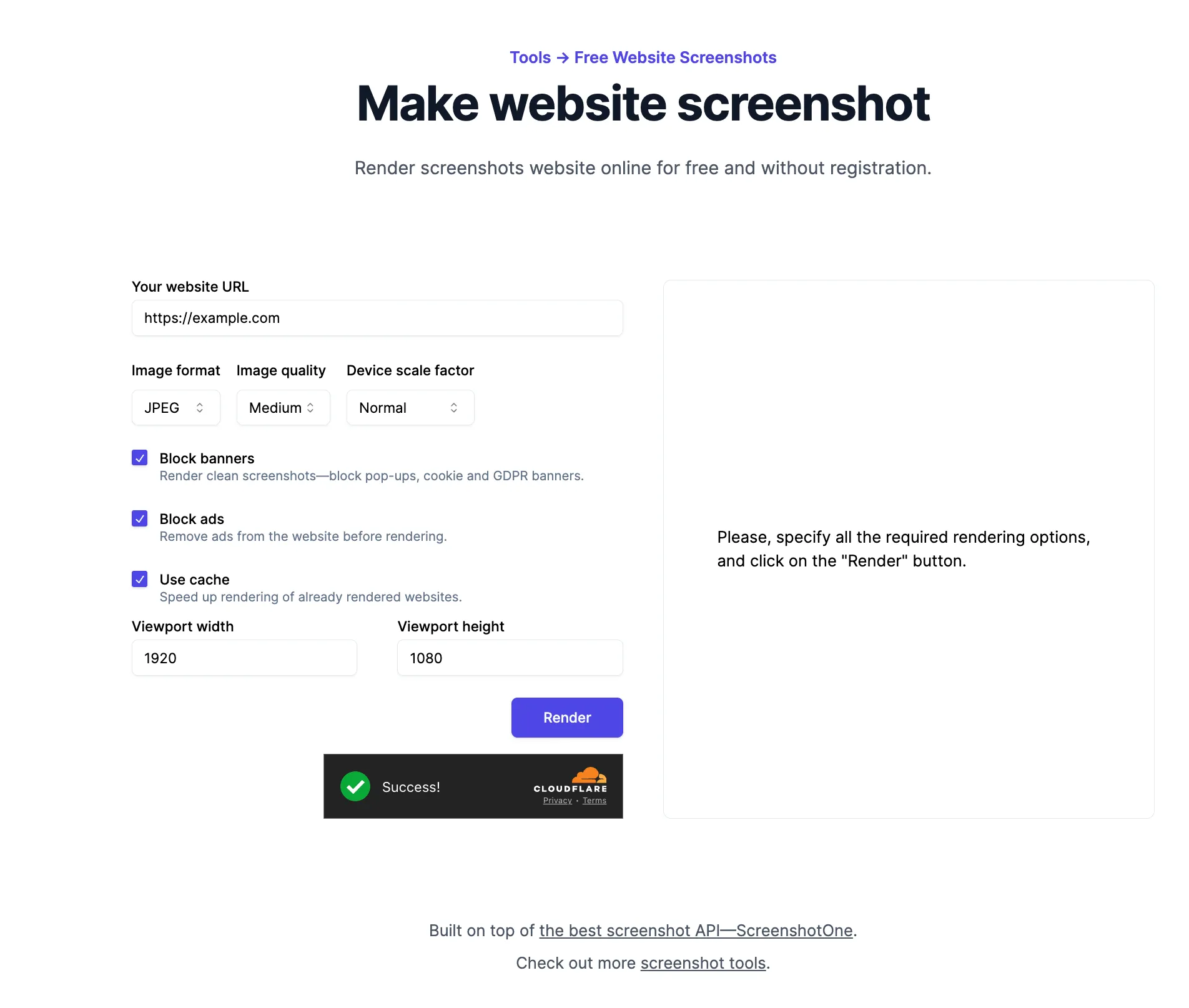
Do not forget to add page title, description, all the headings, link back to all the tools.
4.4. Add FAQ with structured data markup
I added FAQ to target more keywords:
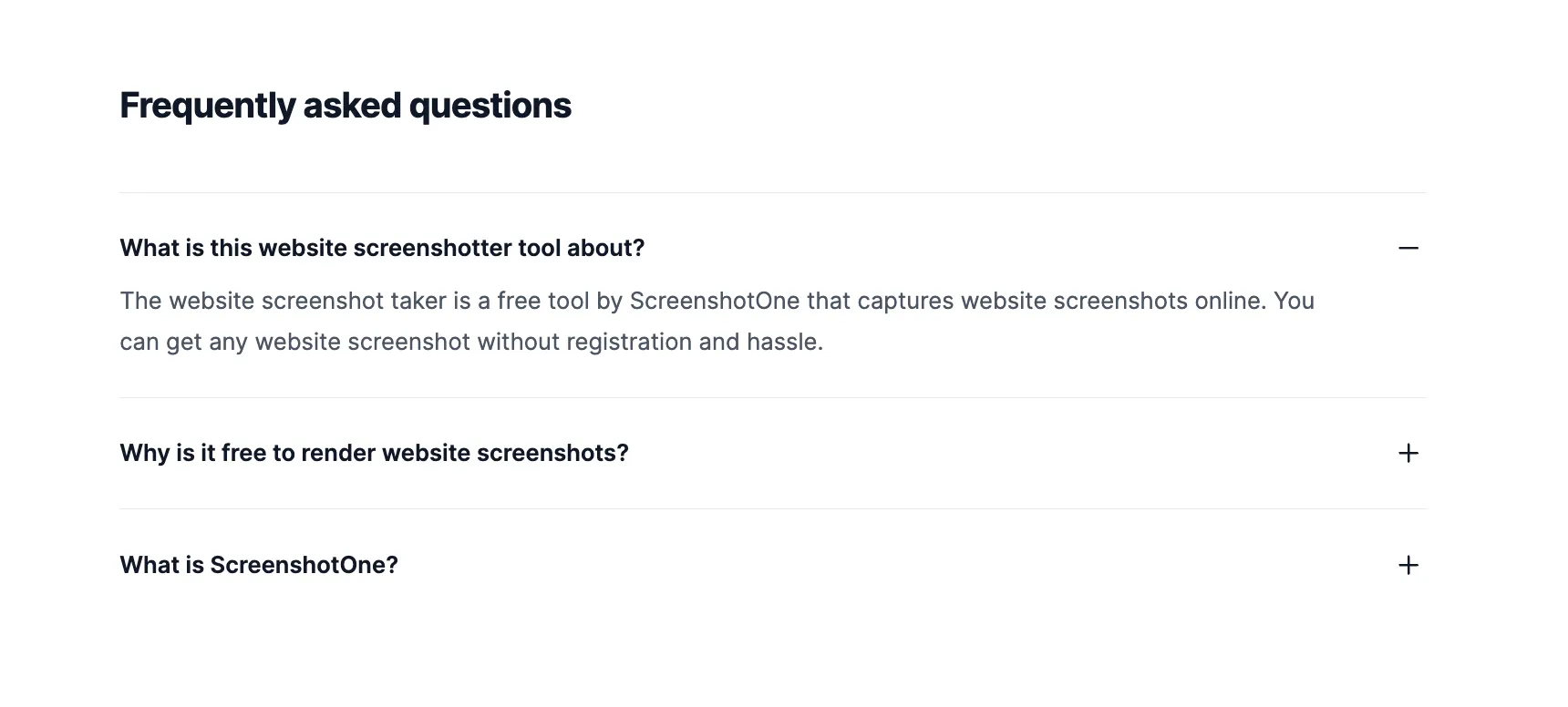
Also when you add FAQ make sure that it uses the structured data markup. It often to occupy more space in the Google search results when you are lucky and your URL is rendered with rich snippets, like:
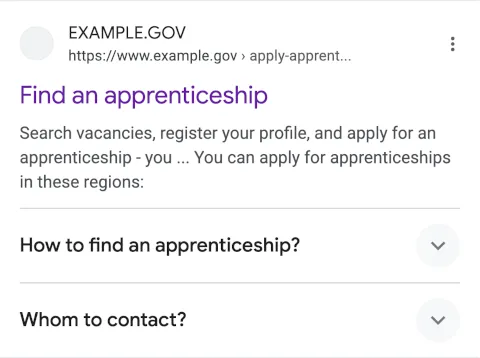
Google has a guide on how to markup structured data and a tool to validate test rich snippets.
4.5. Mention more keyword synonyms
To get more related keywords and ideas, you can use Google Ads Keyword Planner, but for keyword generation:
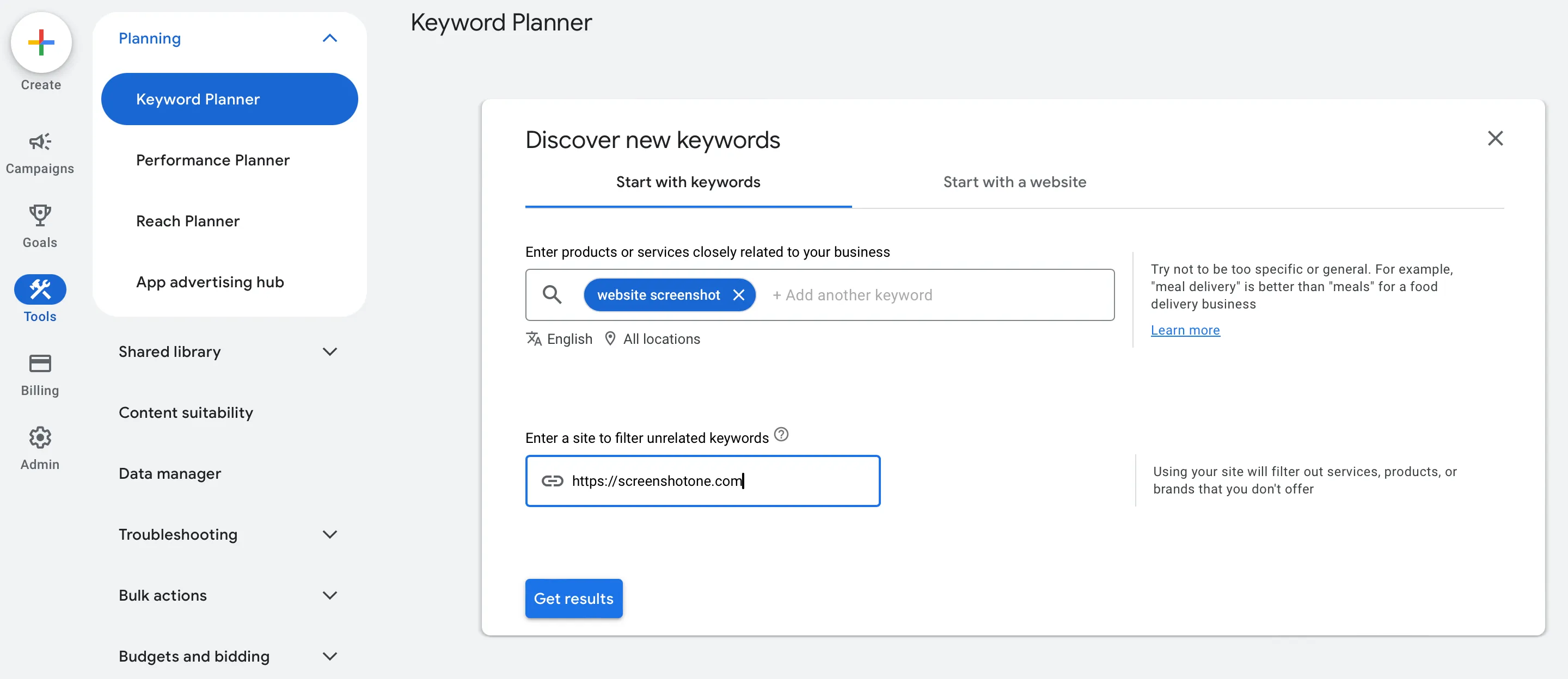
And then I got results like:

As you can see, there is a lot of interesting synonyms like “website catpure tool”, and even “full page screenshot”. But “the full page screenshot” is a good keyword for a different tool, which I built later.
One more way to discover more synonyms is to go directly to Google and search for “website screenshot”, the check the “People also search for” section:
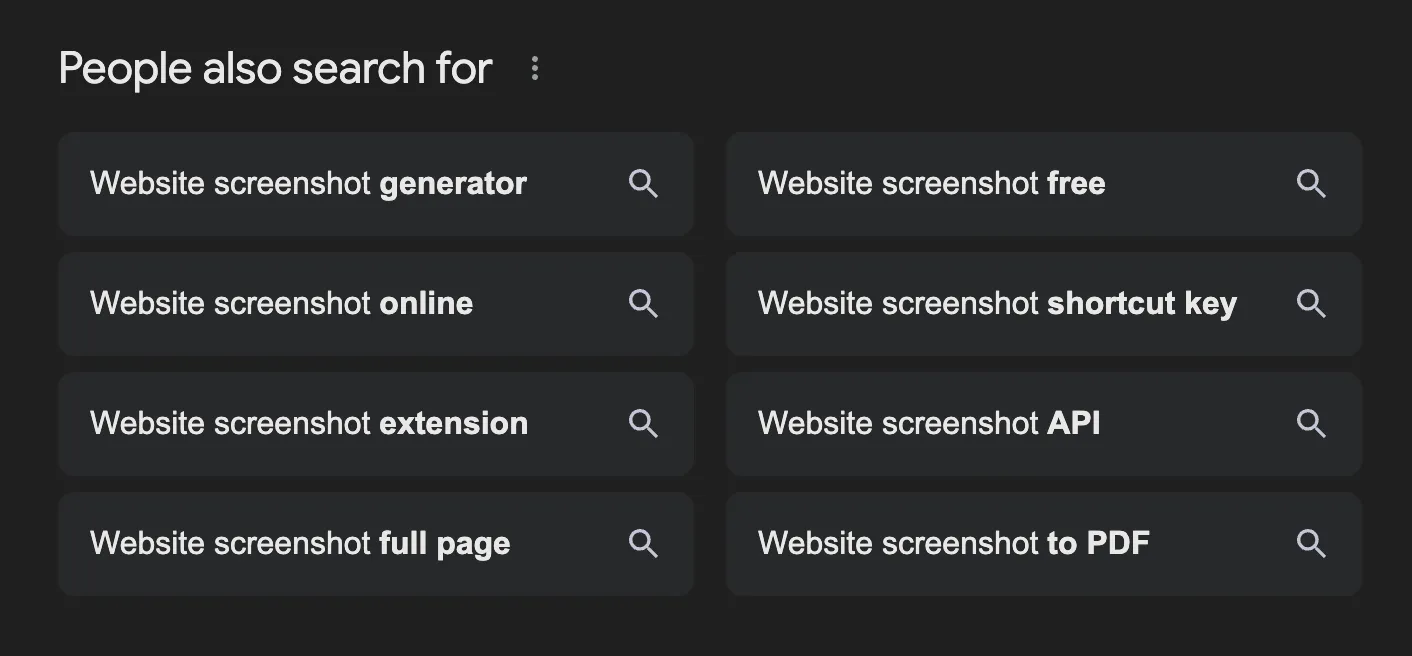
E.g. “website screenshot online” is a good keyword for my tool, I can try to optimize for, too.
5. Promote your tools
Once you built your tools, promote them. Like me doing right now in this newsletter issue, or even, like Damon Chen did with his PDF AI tools. First he posted about every tool on X:
Then he launched his tools on Product Hunt.
Your tools also need marketing and backlinks.
6. Evaluate results
6.1. Check Google Search Console
After approximately three months I checked Google Search Console to see how the tool performs:
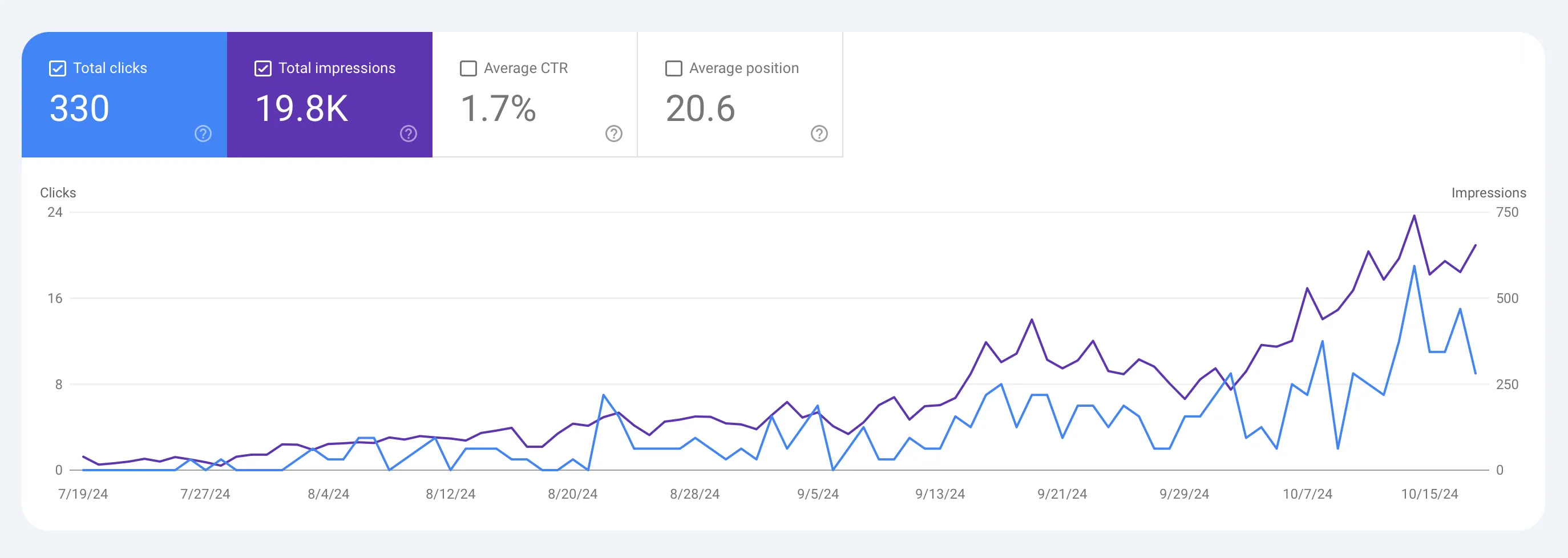
The number of impressions is growing, visits are growing. It is a good and healthy sign.
Also, you can check now the real keywords that people search for:
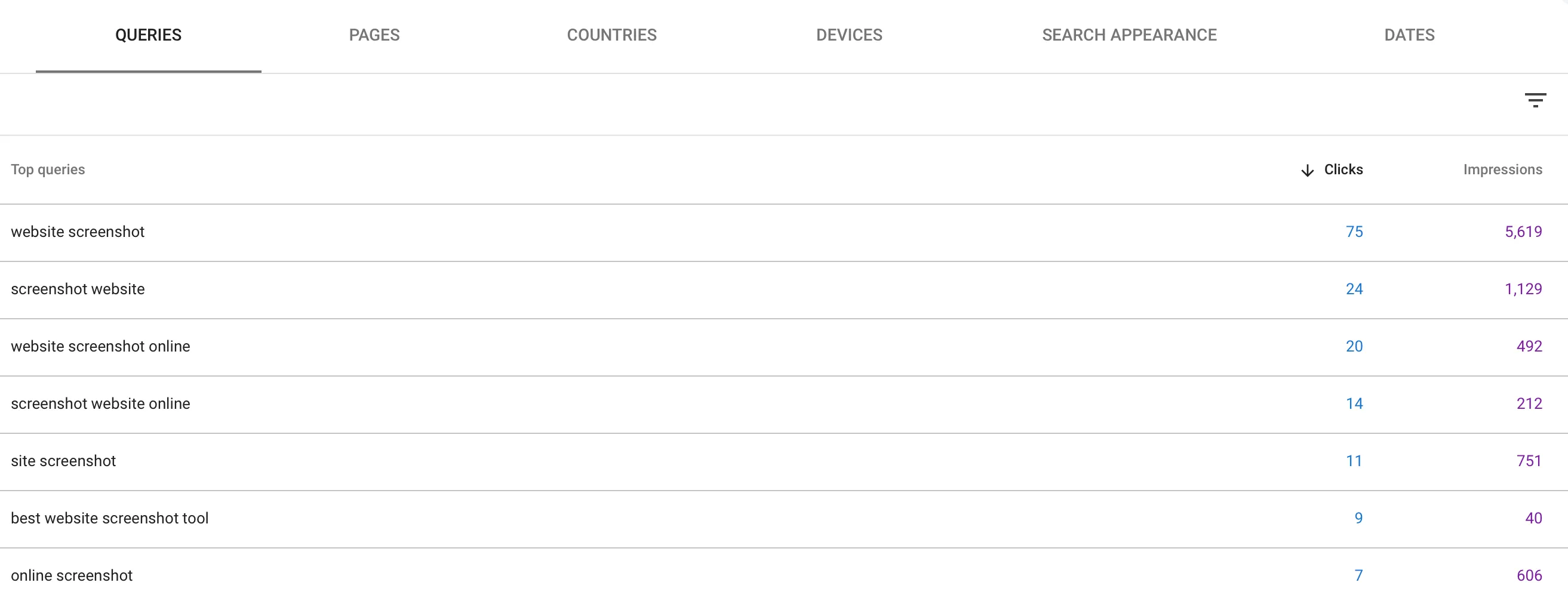
And update your tool headings, name, FAQ, and other parts of the page to target more real keywords.
6.2. Check Conversions And Money Made
And now, ladies and gentlemen, the main question… Did I make money and got paying customers from the tool?
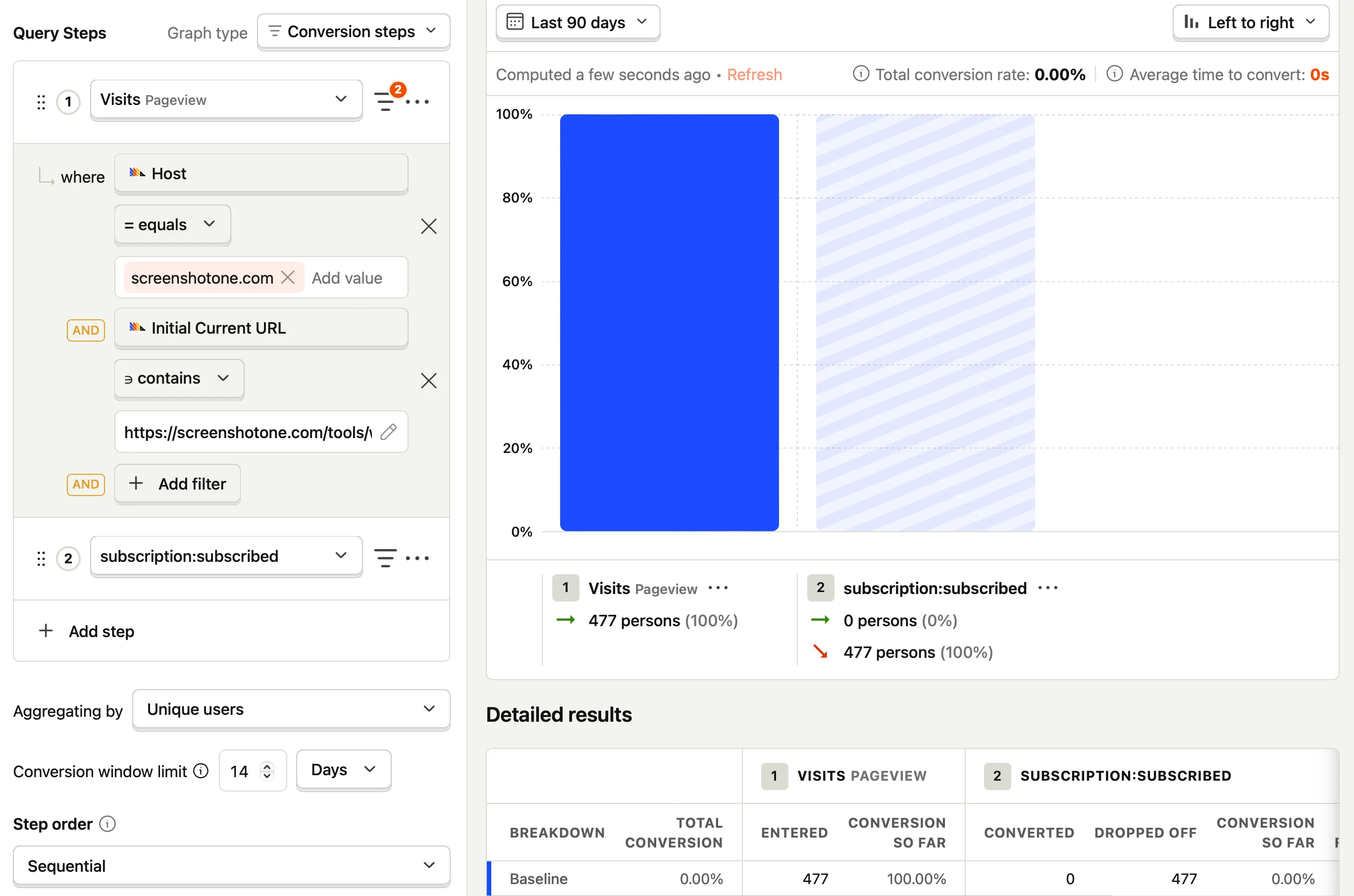
No, it didn’t lead to any profits. I got zero paying customers and I made $0 from it.
It is sad. For me, it was not worth the effort or?
7. Improve
I might give the tool more time and will probably need to improve it. I need to make it like a landing page with code examples and automation examples with invitation for visitors to sign up for the API and try it out.
8. Think for yourself
Social media is flooded with advice to build free tools for marketing and SEO and you will reach $10K MRR just right after the launch of the tools.
But as usual, the reality is more nuanced and you will need to analyze it for yourself. And even if you get visitors from Google, what’s the point if nobody converts?
However, what if they are now aware of my tool? And now that such a solution exists? Or it might be me failing to convert visitors into customers?
Your situation might be different. But you will never know if you do not try.
